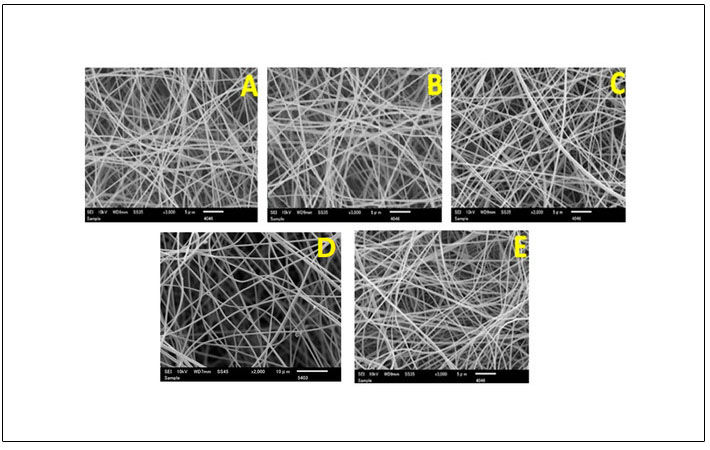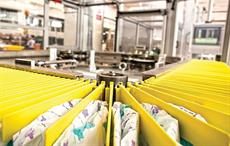
Called Viroblock (VB), the effectiveness of this bioactive chemical was demonstrated by a 4-log decrease in H1N1, H5N1, coronavirus and other virus-associated respiratory diseases. Log reduction is a measure of how thoroughly a decontamination process reduces the concentration of a contaminant.
Facemask testing revealed a 4-log reduction in treated versus untreated specimens, with long-term impact on a variety of goods, including drapes, medical garments, masks and air filters.
The surface structure of PAN electrospun nanofibres supplied with four varying concentrations of VB was investigated. The size distribution of the nanofibres was determined to be 373.40 nm in the case of pure PAN electrospun nanofibres. The average size of the PAN electrospun nanofibres loaded with 0.5 per cent VB was 366.55 nm, with a standard deviation of 49.55 nm, the researchers reported in the journal Applied Sciences.
Moisture content and water contact angle, which are essential characteristics determining a membrane's contamination susceptibility, confirmed the hydrophilicity.
The results showed that the integration of VB in PAN nanofibres did not affect the water content values. All specimens had a water contact angle of fewer than 90 degrees, and all of the produced films were declared hydrophilic.
The results showed that when the proportion of VB in the VB/PAN nanofibers rose, the mass residue fractions of the VB/PAN nanofibers climbed. The quantity of Ag present in VB justified the pattern, as Ag was thermostable in this temperature range. An increase in VB concentration also resulted in decreased air permeability.
An analysis was used to investigate the cytotoxicity of PAN nanostructures and VB/PAN nanofibres in biomedical applications. The cells were shown to be more robust with greater absorbency capacities of deposited formazan as the levels of VB increased. The vitality of all nanofibers improved with duration, indicating that the frameworks are suitable for metabolic activity and cell growth.
Silver infiltrated the bacteria after the walls were disrupted, engaging with sulfur-containing enzymes and causing decreased functioning and oxidative damage to DNA.
In short, the electrospinning process was used to effectively manufacture VB/PAN nanofibres with anti-viral characteristics in this new study.
The researchers were from National Textile University Karachi Campus; Alkaram Textile Mills Pvt. Ltd., Karachi; School of Art & Design, National Textile University, Faisalabad; Institute for Fibre Engineering (IFES), Interdisciplinary Cluster for Cutting Edge Research (ICCER), Shinshu University, Tokida; and the School of Textile-Leather and Fashion, Hanoi University of Science and Technology.
Fibre2Fashion News Desk (DS)

